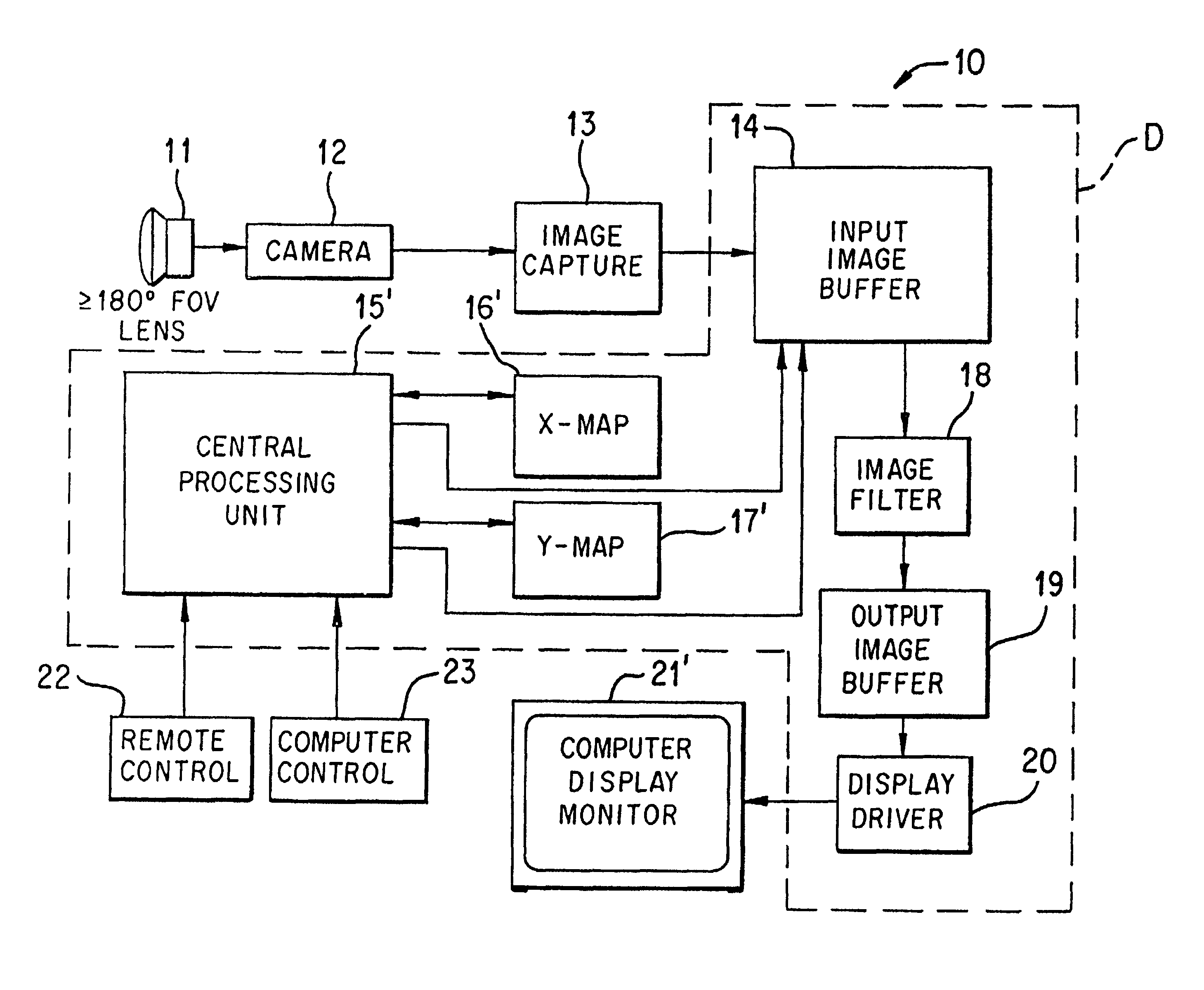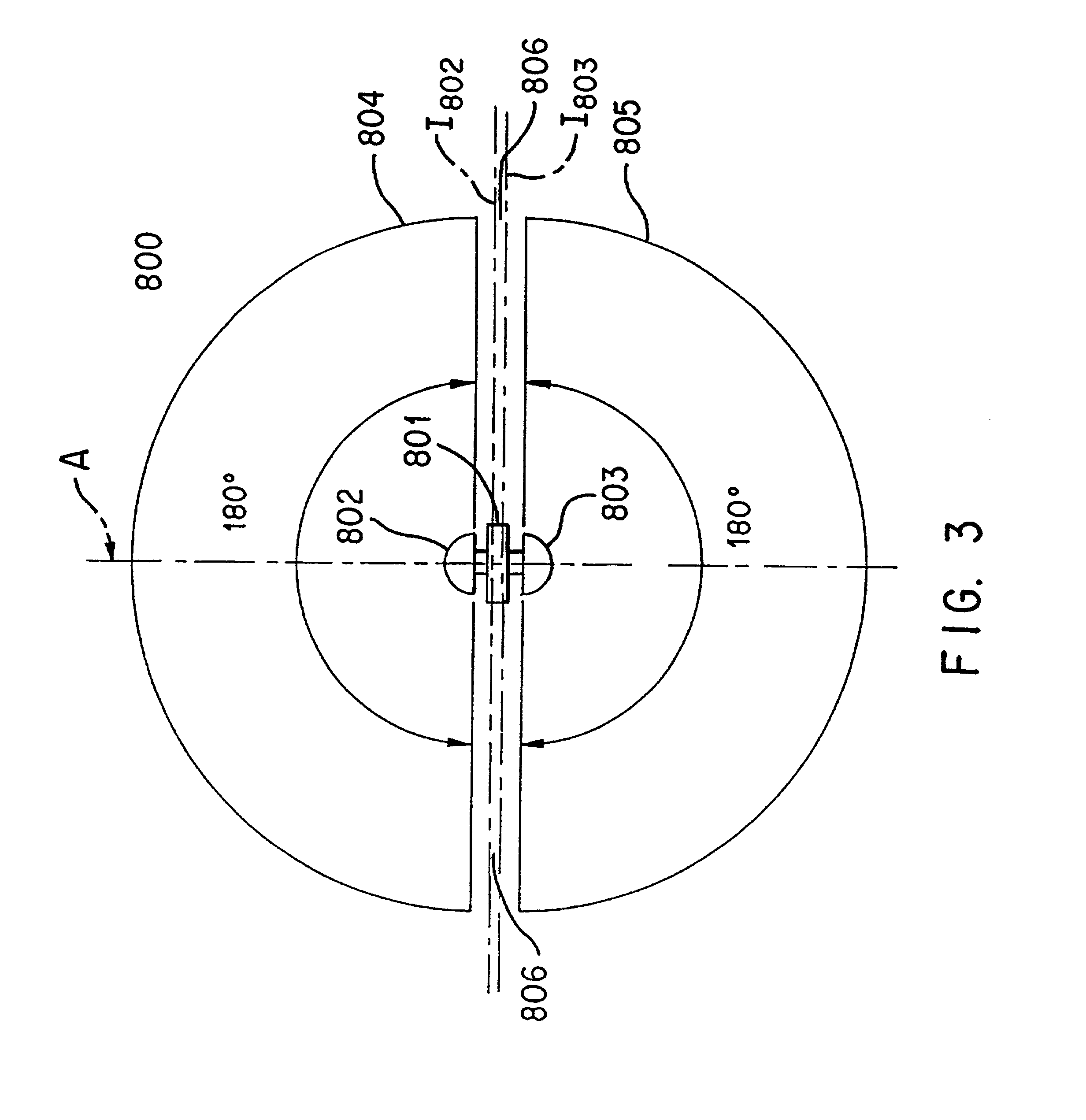Omniview motionless camera orientation system
a motionless camera and orientation system technology, applied in the field of capturing images, can solve the problems of inability to easily solve, distorted left and right ends of the final image, and only realizing the final image of the forest, and achieve the effect of accurate control and simple inputs
- Summary
- Abstract
- Description
- Claims
- Application Information
AI Technical Summary
Benefits of technology
Problems solved by technology
Method used
Image
Examples
Embodiment Construction
Spherical Image Capture
[0061]The disclosed Spherical Image Capture system employs the components disclosed in FIGS. 1-8 to capture hemispherical images and form spherical images. The image transform engine as disclosed in FIGS. 9-13 operates to transform selected portions of the formed spherical images into planar, perspective corrected portions.
[0062]Referring to FIG. 1, camera 601 includes lens 602 with optical axis A, image plane I, and a field-of-view of 180° or greater. If lens 602 has a 180° field-of-view it captures at most the image from hemisphere 603. On the other hand, if lens 602 has a field-of-view greater than 180°, then it captures the image from sector 604 (shown by dotted lines) as well as that of hemisphere 603.
[0063]FIG. 2 shows a camera body 701 (which may include two cameras) connected to lenses 702 and 703 (with image planes I702 and I703, respectively). Each of lenses 702 and 703 have fields of view greater than 180°. Placed in a back-to-back arrangement where...
PUM
 Login to View More
Login to View More Abstract
Description
Claims
Application Information
 Login to View More
Login to View More - R&D
- Intellectual Property
- Life Sciences
- Materials
- Tech Scout
- Unparalleled Data Quality
- Higher Quality Content
- 60% Fewer Hallucinations
Browse by: Latest US Patents, China's latest patents, Technical Efficacy Thesaurus, Application Domain, Technology Topic, Popular Technical Reports.
© 2025 PatSnap. All rights reserved.Legal|Privacy policy|Modern Slavery Act Transparency Statement|Sitemap|About US| Contact US: help@patsnap.com



